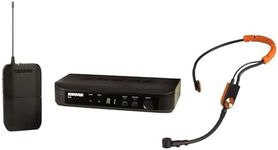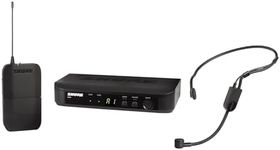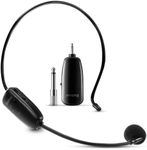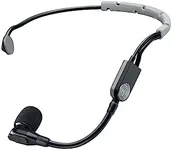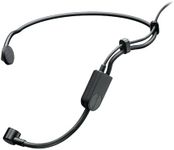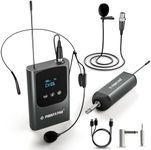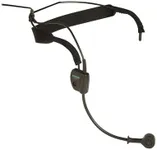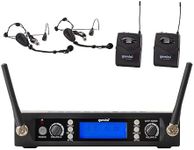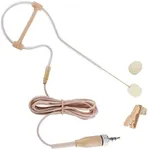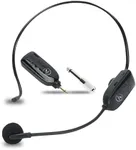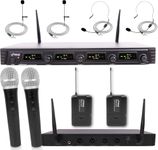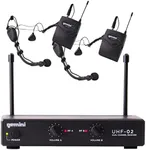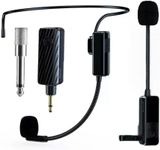Buying Guide for the Best Headset Microphone For Singing
Choosing the right headset microphone for singing is crucial to ensure you get the best sound quality and comfort during performances. A good headset microphone should provide clear and accurate sound reproduction, be comfortable to wear for extended periods, and be durable enough to withstand regular use. When selecting a headset microphone, consider the following key specifications to find the best fit for your needs.Microphone TypeThe microphone type refers to the technology used to capture sound. There are two main types: dynamic and condenser microphones. Dynamic microphones are durable and handle high sound pressure levels well, making them suitable for live performances. Condenser microphones are more sensitive and provide a wider frequency response, which is ideal for studio recordings. If you need a microphone for live performances, a dynamic microphone is a good choice. For studio recordings, a condenser microphone will give you better sound quality.
Polar PatternThe polar pattern of a microphone determines how it picks up sound from different directions. Common polar patterns include cardioid, omnidirectional, and supercardioid. Cardioid microphones pick up sound primarily from the front, reducing background noise, which is great for live performances. Omnidirectional microphones capture sound equally from all directions, providing a natural sound but picking up more background noise. Supercardioid microphones have a tighter pickup pattern than cardioid, offering even better isolation from background noise. Choose a cardioid or supercardioid pattern for live performances to minimize feedback and background noise. For studio use, an omnidirectional pattern can provide a more natural sound.
Frequency ResponseFrequency response refers to the range of frequencies a microphone can capture. A wider frequency response means the microphone can pick up more detail in the sound. For singing, look for a microphone with a frequency response that covers at least 20 Hz to 20 kHz, which is the range of human hearing. This ensures that all the nuances of your voice are captured. If you have a specific vocal style or genre, you might prefer a microphone with a tailored frequency response that enhances certain frequencies.
SensitivitySensitivity measures how well a microphone converts sound into an electrical signal. Higher sensitivity means the microphone can pick up quieter sounds more easily. For singing, a microphone with moderate to high sensitivity is ideal, as it will capture the full dynamic range of your voice. However, if you perform in loud environments, a microphone with lower sensitivity might be better to avoid picking up too much background noise.
Comfort and FitComfort and fit are crucial for a headset microphone, especially if you will be wearing it for long periods. Look for a lightweight design with adjustable headbands and ear hooks to ensure a secure and comfortable fit. The microphone should stay in place without causing discomfort. Try different models to find one that feels comfortable and stable during movement, as this will allow you to perform without distraction.
DurabilityDurability is important, especially if you plan to use the headset microphone frequently or in various environments. Look for microphones made from high-quality materials that can withstand regular use and potential impacts. Check for features like reinforced cables and connectors, as these are common points of failure. A durable microphone will provide reliable performance over time, saving you from frequent replacements.
Wireless vs. WiredHeadset microphones come in both wired and wireless options. Wired microphones offer a stable and interference-free connection, making them ideal for studio use or stationary performances. Wireless microphones provide more freedom of movement, which is beneficial for dynamic stage performances. Consider your performance style and environment when choosing between wired and wireless. If you need to move around a lot, a wireless microphone will give you the flexibility you need. For stationary use, a wired microphone might be more reliable.
